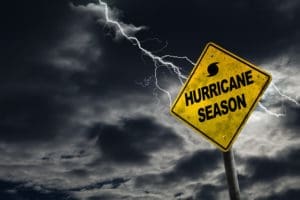 Welcome to National Hurricane Preparedness Week. Declared by the National Weather Service in the United States, the goal is to encourage individuals and businesses alike to develop evacuation plans before major hurricanes hit this season. The Weather Company, an arm of IBM, is predicting there will be 14 named storms, with the potential for seven hurricanes and three major hurricanes in 2019. Hurricane season in the U.S. typically runs through June 1 through November 30th.
Welcome to National Hurricane Preparedness Week. Declared by the National Weather Service in the United States, the goal is to encourage individuals and businesses alike to develop evacuation plans before major hurricanes hit this season. The Weather Company, an arm of IBM, is predicting there will be 14 named storms, with the potential for seven hurricanes and three major hurricanes in 2019. Hurricane season in the U.S. typically runs through June 1 through November 30th.
Fortunately, cloud computing has changed the way IT organizations prepare to recover from devastating storms, but a significant gap in preparedness still exists. A recent survey of 1,000 IT professionals, business executives, and backup administrators conducted by Barracuda Networks finds that 36 percent of respondents still don’t back data up to the cloud. That would suggest that over a third of organizations are still relying on backing up data either locally or, hopefully, to another data center in a geographic area that would be beyond the reach of any storm headed toward their primary data center.
As most managed service providers (MSPs) know all too well, far too many organizations are backing up data to another data center facility that is typically only a few miles away, only to discover that in an emergency both facilities are being adversely impacted by the same storm.
Keep your data protected from natural disasters
MSP should take advantage of the social media awareness campaign being pushed this week by the National Weather Service to have a meaningful conversation with customers about how to both prepare for and recover from a major storm. A disaster recovery plan should go well beyond how to recover data.
Most organizations intuitively understand they will need to able to access redundant power supplies, but underestimate how difficult it will be for members of their IT teams to communicate during a major storm. That can be especially problematic when members of those IT teams have been evacuated to different geographies by local authorities.
It’s critically important for MSPs to have these conversations with customers now because there’s not much that can be done once the storm hits. In the age of the cloud, there’s really no excuse for a business not being able to recover.
It may not be easy, but all digital assets that the business depends on can be instantly recovered using a variety of Disaster Recovery-as-a-Service (DRaaS) offerings. It may take a while to replace the physical assets of a business, but the core of the business should remain intact.
Savvy MSPs are not only having these conversations with local business owners, many of them are engaging local officials that realize how dependent the local economy is on the resiliency of the businesses that employ its citizens. Government officials have a vested interest in ensuring local businesses are prepared to ride out any storm. In some cases, that may mean implementing a disaster recovery plan across multiple businesses within a local community.
Of course, it can be a challenge to get business leaders to focus on disaster recovery when there’s no immediate threat. However, as most business leaders that have survived a major storm can attest, there is no substitute for being prepared.
Photo: Ronnie Chua / Shutterstock
